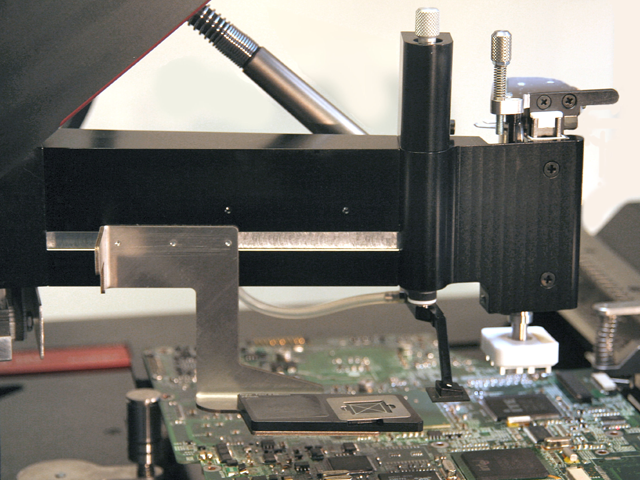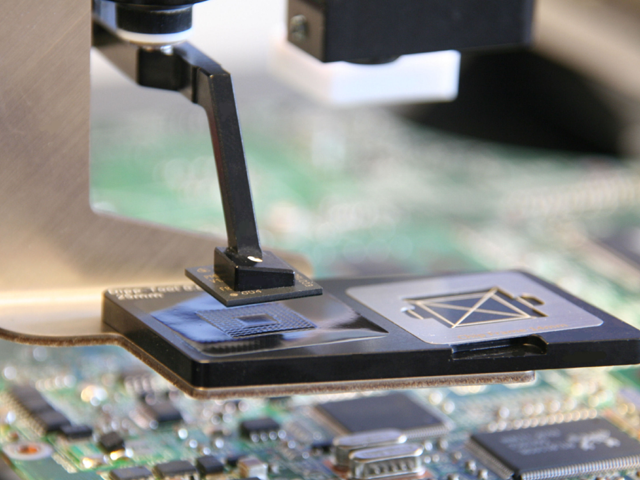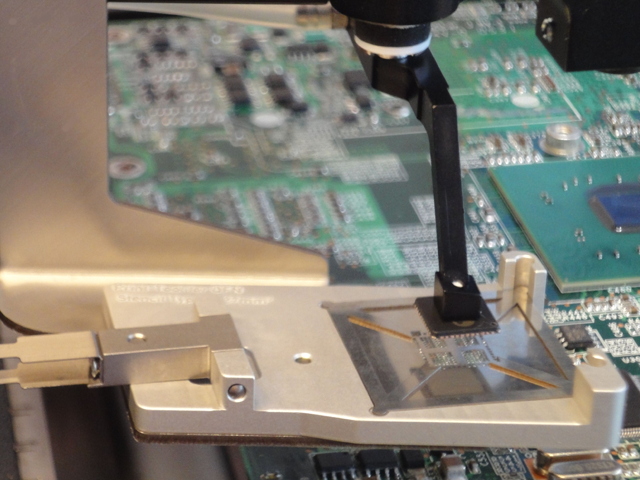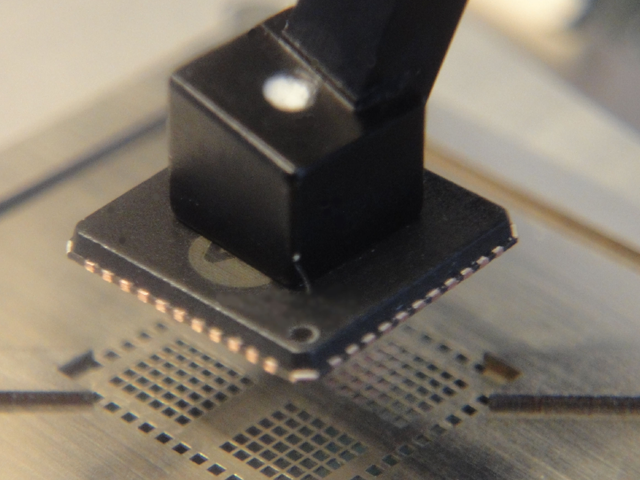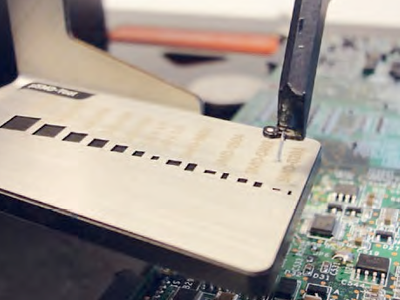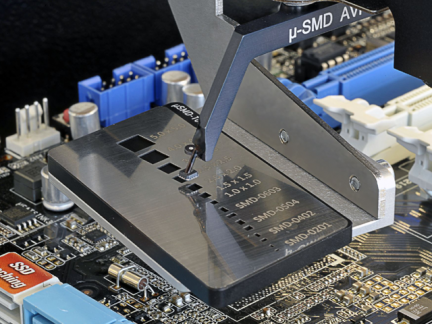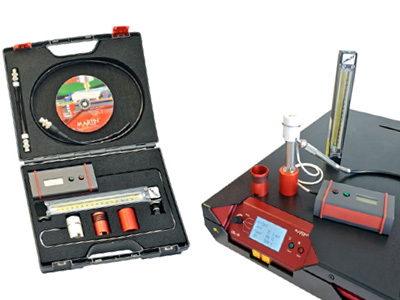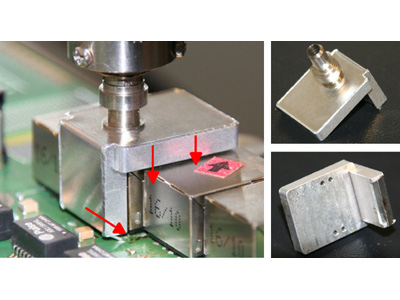Small things can have big effects. A small air bubble under a soldered BGA can possibly lead to the whole product failing. Due to the complexity of assemblies, with ever-increasing component densities, the trusty soldering iron has long run out of steam. Even if experienced ‘old hands’ manage to apply their magic with the hot solder tip and relatively precisely remove and re-solder QFNs assemblers (EMS) find an increasing number of enquiries for automated, reliable and repeatable rework processes. Extraordinary care and a large portion of experience are called for. More and more EMS, therefore, offer Rework/Repair as a service.
Repair of Assemblies Redefined
Desoldering, repair, soldering - done. Quite as simple rework rarely is. Increasing complexity of PCBs and assemblies today present significant challenges to rework specialists and their tools. Application specific and innovative solutions offer the key to success in this competence. This has been recognised by MARTIN for some years. Their rework product family Expert has a very wide application spectrum. In semi automatic mode the Hybrid rework systems are suitable for reliably reworking components from the smallest 0201 to BGAs, CSPs, QFNs and plugs and sockets.
The compact rework stations not only cater for the desoldering and soldering of components but also the removal of residual solder and the dispensing of solder pastes and fluxes. There are now four models in this semi automatic series available – easily adaptable to specific rework situations. Whereas the Expert 10.6 IV is suited to reworking CSPs on small PCBs, such as for smart phones, the Expert 10.6 HV excels with BGAs and QFNs on middle sized PCBs and the version Expert 10.6 HXV caters for large PCBs, such as for servers and main boards.
Desoldering, repair, soldering - done. Quite as simple rework rarely is. Increasing complexity of PCBs and assemblies today present significant challenges to rework specialists and their tools. Application specific and innovative solutions offer the key to success in this competence. This has been recognised by MARTIN for some years. Their rework product family Expert has a very wide application spectrum. In semi automatic mode the Hybrid rework systems are suitable for reliably reworking components from the smallest 0201 to BGAs, CSPs, QFNs and plugs and sockets. The compact rework stations not only cater for the desoldering and soldering of components but also the removal of residual solder and the dispensing of solder pastes and fluxes. There are now four models in this semi automatic series available – easily adaptable to specific rework situations. Whereas the Expert 10.6 IV is suited to reworking CSPs on small PCBs, such as for smart phones, the Expert 10.6 HV excels with BGAs and QFNs on middle sized PCBs and the version Expert 10.6 HXV caters for large PCBs, such as for servers and main boards.
All systems have been augmented by well thought out modules, which take account of the increasing demands of modern PCB rework. Generally, the trend is towards more user independent processes, which transform challenging applications into easy to apply solutions. Greater convenience is provided by three innovations: pick up of components from a tray (Illustr 1), processing of QFNs printed with solder paste (Illustr 2) and the dipping of components into flux (Illustr 3). The motivation for the development of these modules has been the idea to make all required process steps as simple and as easy to use as possible, while at the same time enhancing precision and quality.
For the installation of the new modules a special bracket has been built into the camera arm AVP. This arrangement can be quickly and easily moved under the placement nozzle and just as rapidly retracted to the stand-by position after component transfer. The bracket accepts the μSMD module, which can handle even the smallest components. The Dipping module facilitates the solder balls of a BGA, for example, to be coated with a predefined amount of flux. With the third module – the QFN Printer - QFN components can be printed with solder paste, followed immediately by precise placement onto a PCB with the AVP system.
Conventional solutions to such demands often involve portal systems with motorised heads for the different process stations. In contrast MARTIN have cleverly integrated these sub-processes in their Expert placement system. By using various tool inserts the process steps can be easily and quickly set up for without needing any additional software support.
Careful and Efficient Rework
At the heart of successful rework is the correct temperature at the right time. Because of the Hybrid Technology (combination of heating gas and infra-red) employed with these Underheaters a homogenous temperature distribution of ±10 C° at 120 °C is achieved which, even with giant PCBs up to 530 mm x 710 mm, manages gentle and effective reworking. While rapid heating can be achieved with infra-red, the heating gas flows efficiently distribute heat under the PCB. The main point is that convection supports the heating effect. Users are able to select individual infra-red heaters. Such segmentation makes the Underheater very flexible, allowing PCBs of different sizes and shapes to be heated homogeneously. Boards heat at a rate of approximately 2.5° C/s and their temperatures can be set to within ± 2 °C. Heat energy to the SMDs is usually supplied from the top with heated gas. Hybrid Underheaters and heated gas from the top efficiently provide the required heat energy for rework. Hot gas is available at temperatures up to 450 °C. According to model, Underheaters consume between 110 W and 10.000 W of energy.
Precision in Sight
AVP stands for Advanced Vision Placement and is a system that provides software supported and user-independent placement of components. Users merely mark the corners of components with mouse clicks on the monitor – the system then aligns and places the component automatically. This ingenious system, developed by MARTIN, ensures accurate placement: once the software knows where the corners of the component are located, the nozzle with the components automatically lowers itself so that there is a distance of approximately 2 mm left between the underside of the component and to the top of the PCB. At that point a high-resolution colour camera takes over and provides fine adjustments. The big monitor shows the placement process for operators to follow, who can intervene at any stage. For the wide range of component sizes from μSMDs to BGAs, three lenses with fixed magnifications are available.
Intuitive Software
The revised soldering software Easy Solder accompanies the user throughout the complete process. Another enhancement is Auto- Profiler: profiles for desoldering and soldering are defined from just a few parameters and a couple of thermo couples. Whereas the holding energy can be reduced by a third the temperature is accurately maintained without overshoot. A report function provides documentation for recording profiles and individual rework processes.
Evolutionary Rework
Operator Convenience – First and Foremost (published in productronic 03/2013)
SMT assembly lines undergo continuous changes.
On the path to optimal assembly a lot of time and effort has been expended in recent years, especially in the realms of process feedback: only seamless control of all parameters can ensure productivity and quality at the highest levels. Where does that leave rework?
